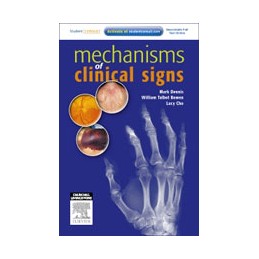- Obniżka


 Dostawa
Dostawa
Wybierz Paczkomat Inpost, Orlen Paczkę, DHL, DPD, Pocztę, email (dla ebooków). Kliknij po więcej
 Płatność
Płatność
Zapłać szybkim przelewem, kartą płatniczą lub za pobraniem. Kliknij po więcej szczegółów
 Zwroty
Zwroty
Jeżeli jesteś konsumentem możesz zwrócić towar w ciągu 14 dni*. Kliknij po więcej szczegółów
A robust understanding of the pathophysiological mechanisms behind clinical signs is crucial for medical students and junior doctors. Being able to accurately identify the clinical sequelae of disease during physical examination and connecting cause with consequence is the first step in correct diagnosis and treatment.
For example, a patient with rheumatoid arthritis has distinctive hand changes, a patient with Parkinsons disease has a particular tremor, and a patient with liver disease may present with red palms. Each of these signs has a mechanism or pathway which results in the characteristic presentation. Currently, in medical school tutorial groups, time is set aside to discuss mechanisms of clinical signs and disease processes. However, current textbooks on clinical examination are mainly organized by disease systems and disease states. This new book bridges the gap between identification of clinical signs and understanding the causes behind them.
Opis
Table of Contents
Chapter 1 Musculoskeletal signs
Chapter 2 Respiratory signs
Chapter 3 Cardiobvascular signs
Chapter 4 Haematological signs
Chapter 5 Neurological signs
Chapter 6 Gastrointestinal signs
Chapter 7 Endocrinology signs
